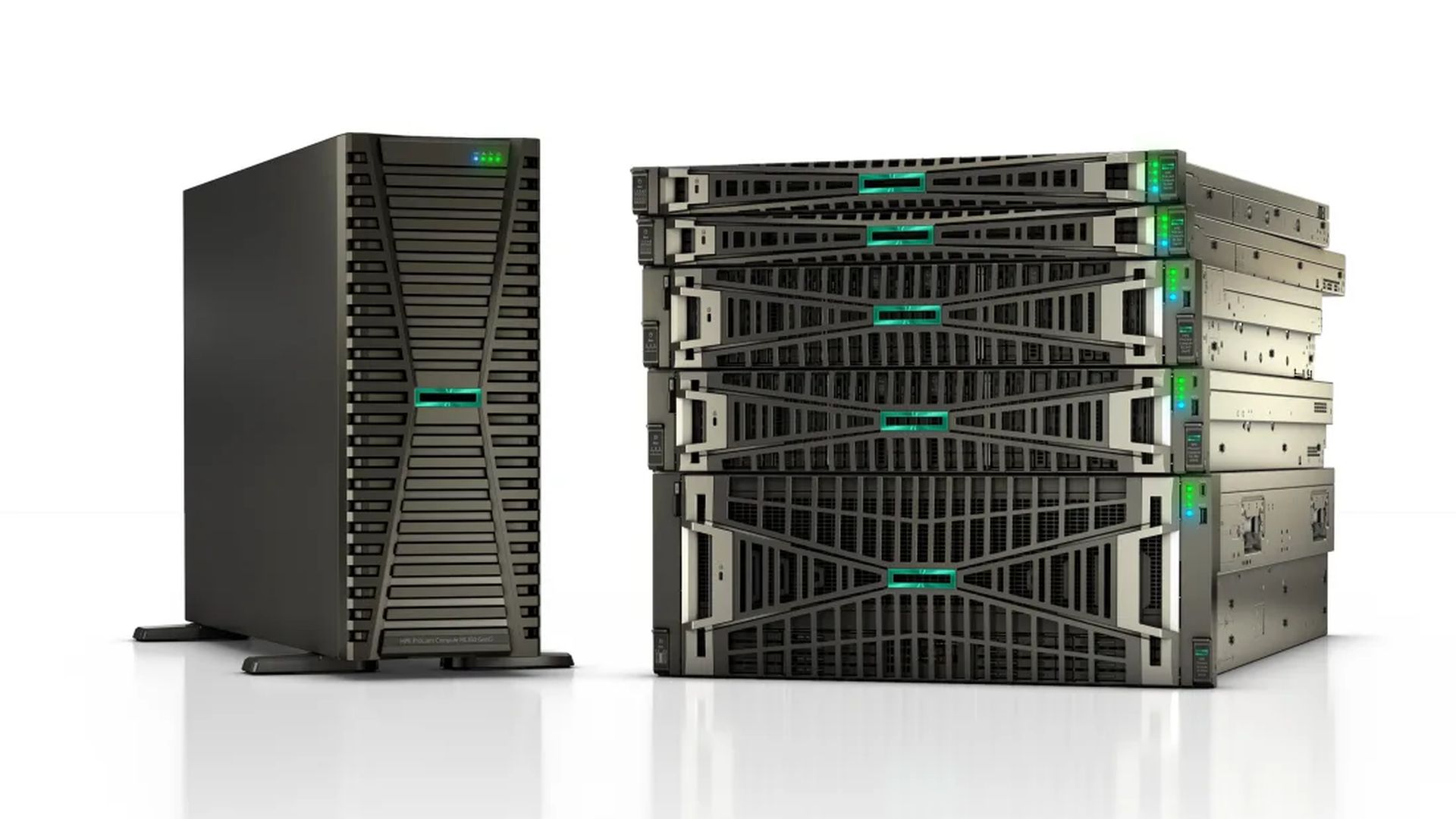HPE launches slew of Xeon-based Proliant servers which claim to be impervious to quantum computing threats
HPE ProLiant Gen12 server cuts energy use by 65% and cooling power by 90%

- Six rack-mounted servers arrive in Q1 2025, while the Synergy 480 blade and DL580 quad-socket in Q3 2025
- Offers up to 288 cores, 8TB DDR5 memory, and PCIe Gen5
- HPE introduces quantum-resistant encryption
Hewlett Packard Enterprise (HPE) has unveiled its latest ProLiant Compute Gen12 portfolio, introducing eight new servers powered by Intel Xeon 6 processors.
This marks a departure from previous generations that offered AMD EPYC alternatives, and HPE says the new lineup with faster DDR5 configurations can provide up to 65% annual power savings, thanks to its AI-driven optimizations and fanless Direct Liquid Cooling (DLC) architecture which reduces cooling power consumption by up to 90%.
The ProLiant Gen12 portfolio integrates quantum-resistant encryption to guard against cryptographic threats while HPE iLO 7 offers independent hardware-based protection for sensitive credentials, such as encryption keys and system passwords.
Expanding the ProLiant lineup
The ProLiant Gen12 series includes six rack-mounted servers, a blade server, and a high-performance quad-processor system.
Among them, the DL380 (2U) and DL360 (1U) provide dual-socket configurations, supporting up to 288 cores, 8TB of DDR5 memory, and PCIe Gen5 expansion. These models cater to enterprises requiring scalable compute power for AI, cloud, and virtualization workloads.
For businesses seeking cost-effective single-socket solutions, the DL320 and DL340 offer targeted performance benefits. The DL320, a 1U server, supports up to 144 cores, 2TB of DDR5 memory, and PCIe Gen5 expansion, making it ideal for virtualization while the DL340, a 2U server, is optimized for AI-driven cloud computing with support for up to 8TB of DDR5 memory and PCIe Gen5 connectivity.
Designed for SMBs and edge computing, the ML350 tower server offers up to 8TB of DDR5 memory and multiple PCIe Gen5 slots. Meanwhile, the DL380a, a 2U rack server, is built for intensive workloads, supporting up to 16 single-wide or 8 double-wide GPUs.
Are you a pro? Subscribe to our newsletter
Sign up to the TechRadar Pro newsletter to get all the top news, opinion, features and guidance your business needs to succeed!
HPE plans to release the six rack-mounted servers in Q1 2025, while the Synergy 480 blade server and the high-performance DL580 quad-processor system will launch this summer, available as standalone units or through HPE GreenLake.
“Our customers are tackling workloads that are overwhelmingly data-intensive and growing ever-more demanding,” said Krista Satterthwaite, senior vice president and general manager, Compute at HPE.
“The new HPE ProLiant Compute Gen12 servers give organizations – spanning public sector, enterprise and vertical industries like finance, healthcare and more – the horsepower and management insights they need to thrive while balancing their sustainability goals and managing costs," she added.
"This is a modern enterprise platform engineered for the hybrid world, designed with innovative security and control capabilities to help companies prevail over the evolving threat landscape and performance challenges that their legacy hardware cannot address."
You may also like
- These are the best mobile workstations around today
- Check out the best business laptops available at the moment
- Fancy a drone destroyer? Someone transformed a Framework 16 laptop into a UAV killer thanks to a custom SDR module

Efosa has been writing about technology for over 7 years, initially driven by curiosity but now fueled by a strong passion for the field. He holds both a Master's and a PhD in sciences, which provided him with a solid foundation in analytical thinking. Efosa developed a keen interest in technology policy, specifically exploring the intersection of privacy, security, and politics. His research delves into how technological advancements influence regulatory frameworks and societal norms, particularly concerning data protection and cybersecurity. Upon joining TechRadar Pro, in addition to privacy and technology policy, he is also focused on B2B security products. Efosa can be contacted at this email: udinmwenefosa@gmail.com
You must confirm your public display name before commenting
Please logout and then login again, you will then be prompted to enter your display name.